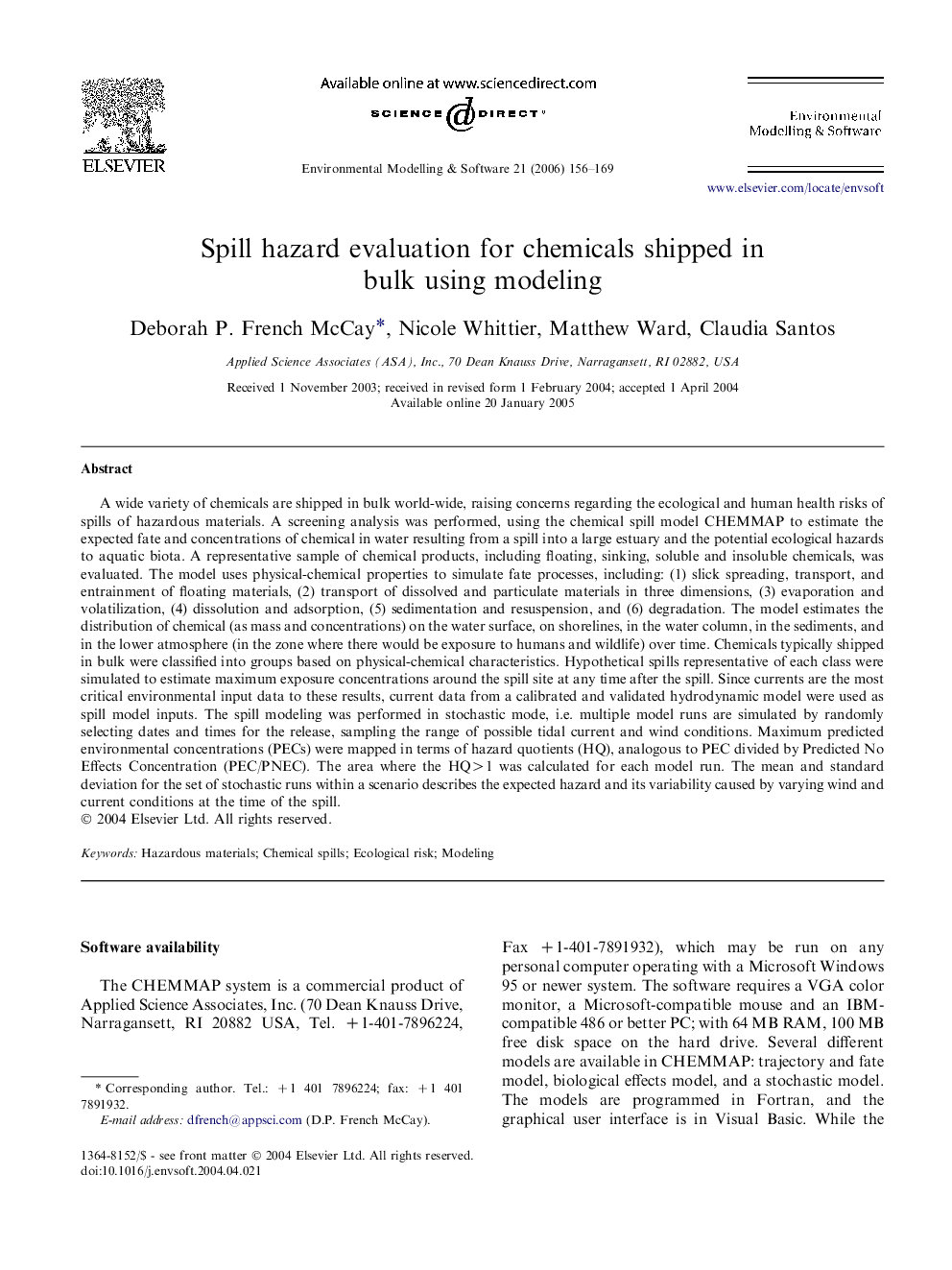| کد مقاله | کد نشریه | سال انتشار | مقاله انگلیسی | نسخه تمام متن |
|---|---|---|---|---|
| 570163 | 876719 | 2006 | 14 صفحه PDF | دانلود رایگان |

A wide variety of chemicals are shipped in bulk world-wide, raising concerns regarding the ecological and human health risks of spills of hazardous materials. A screening analysis was performed, using the chemical spill model CHEMMAP to estimate the expected fate and concentrations of chemical in water resulting from a spill into a large estuary and the potential ecological hazards to aquatic biota. A representative sample of chemical products, including floating, sinking, soluble and insoluble chemicals, was evaluated. The model uses physical-chemical properties to simulate fate processes, including: (1) slick spreading, transport, and entrainment of floating materials, (2) transport of dissolved and particulate materials in three dimensions, (3) evaporation and volatilization, (4) dissolution and adsorption, (5) sedimentation and resuspension, and (6) degradation. The model estimates the distribution of chemical (as mass and concentrations) on the water surface, on shorelines, in the water column, in the sediments, and in the lower atmosphere (in the zone where there would be exposure to humans and wildlife) over time. Chemicals typically shipped in bulk were classified into groups based on physical-chemical characteristics. Hypothetical spills representative of each class were simulated to estimate maximum exposure concentrations around the spill site at any time after the spill. Since currents are the most critical environmental input data to these results, current data from a calibrated and validated hydrodynamic model were used as spill model inputs. The spill modeling was performed in stochastic mode, i.e. multiple model runs are simulated by randomly selecting dates and times for the release, sampling the range of possible tidal current and wind conditions. Maximum predicted environmental concentrations (PECs) were mapped in terms of hazard quotients (HQ), analogous to PEC divided by Predicted No Effects Concentration (PEC/PNEC). The area where the HQ > 1 was calculated for each model run. The mean and standard deviation for the set of stochastic runs within a scenario describes the expected hazard and its variability caused by varying wind and current conditions at the time of the spill.
Journal: Environmental Modelling & Software - Volume 21, Issue 2, February 2006, Pages 156–169